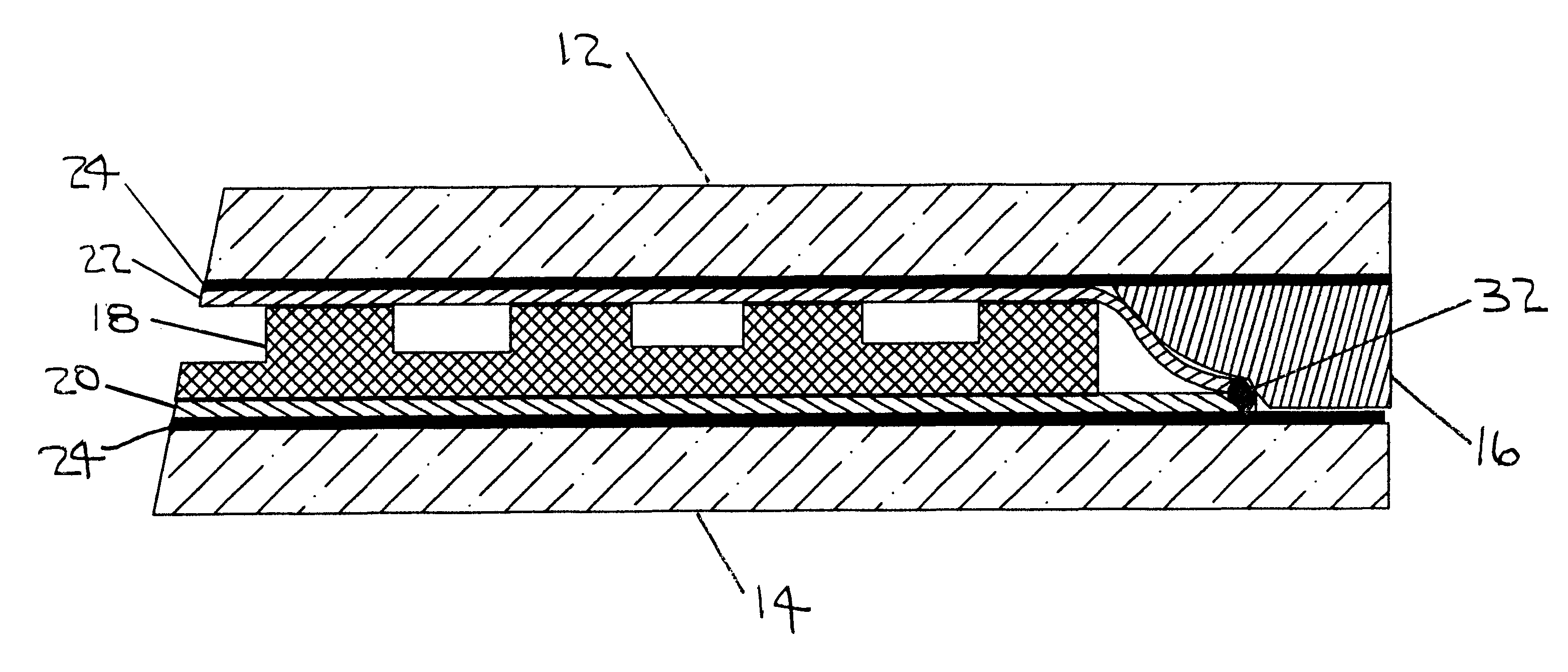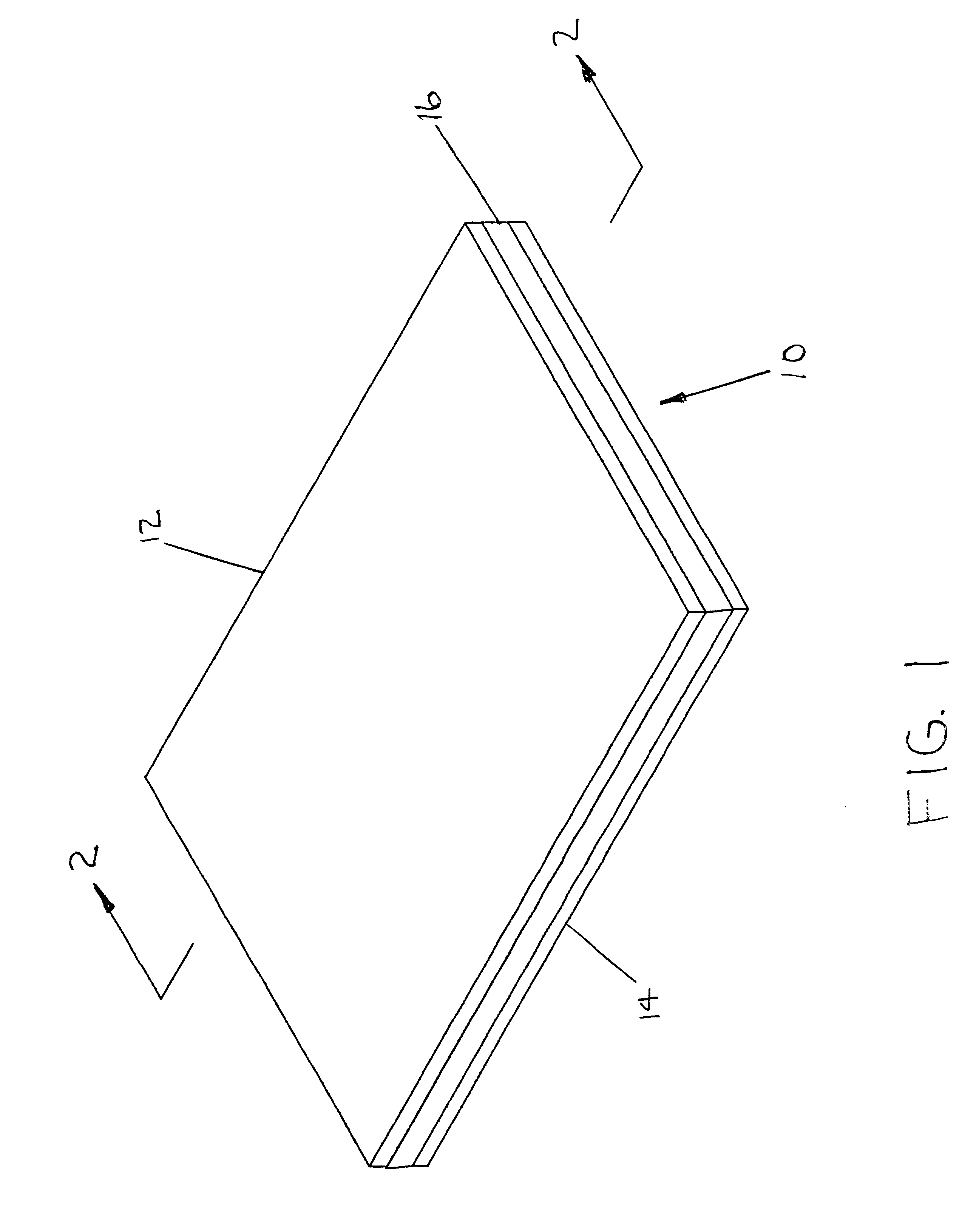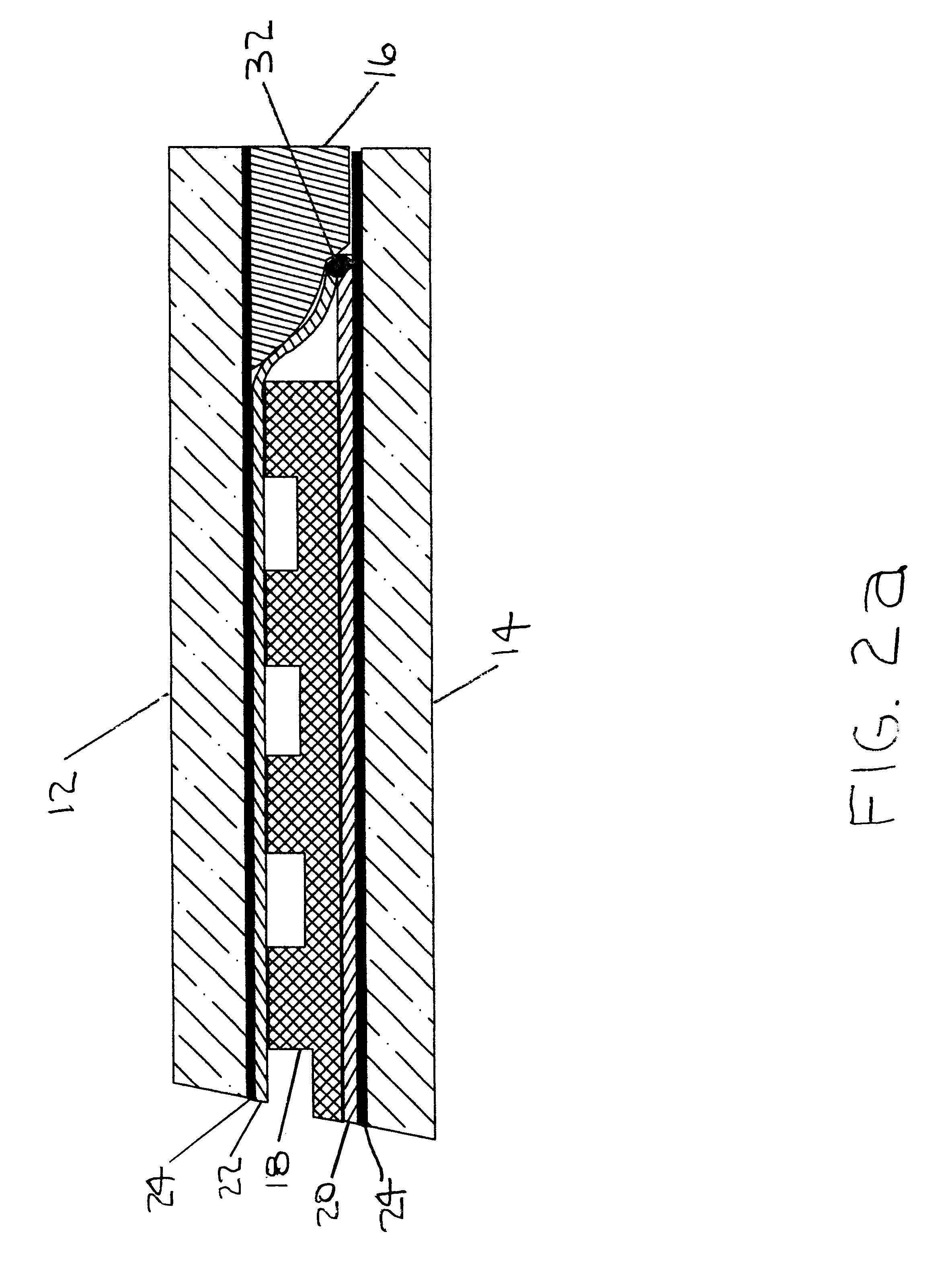Light weight rigid flat heat pipe utilizing copper foil container laminated to heat treated aluminum plates for structural stability
- Summary
- Abstract
- Description
- Claims
- Application Information
AI Technical Summary
Problems solved by technology
Method used
Image
Examples
Embodiment Construction
FIG. 1 shows the present flat plate heat pipe invention 10 with condensing surface aluminum plate 12. Evaporating surface aluminum plate 14 is on the underside of FIG. 1 and only two of its edges are shown in this view. Potting material 16 comprised of epoxy or other elastomeric material provides a smooth edge around the periphery of the laminated flat plate heat pipe invention 10.
FIG. 2a depicts a partial cross-sectional view of flat plate heat pipe invention 10 in the direction of the section arrows of FIG. 1. Sintered copper powder waffle surface wick 18 is made by sintering without compaction in a hydrogen atmosphere at 850 C. for about one half hour. Copper powder has particle size of about 0.05 to 0.1 mm diameter before sintering. The waffle surface of sintered copper powder waffle surface wick 18 is formed by sintering in a machined graphite or stainless steel mold. The wick is about 0.04 to 0.20 inch thick over-all, with the waffle grid stand-offs about 0.03 to 0.15 inch thi...
PUM
 Login to view more
Login to view more Abstract
Description
Claims
Application Information
 Login to view more
Login to view more - R&D Engineer
- R&D Manager
- IP Professional
- Industry Leading Data Capabilities
- Powerful AI technology
- Patent DNA Extraction
Browse by: Latest US Patents, China's latest patents, Technical Efficacy Thesaurus, Application Domain, Technology Topic.
© 2024 PatSnap. All rights reserved.Legal|Privacy policy|Modern Slavery Act Transparency Statement|Sitemap



